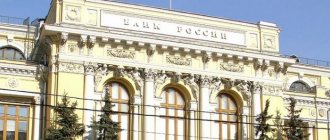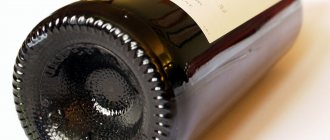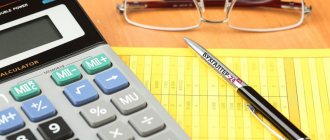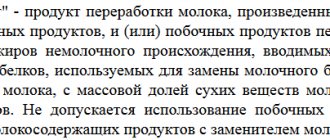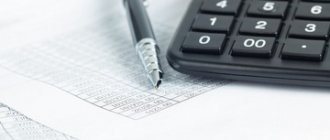Medical services
In Art. 149 of the Tax Code lists all goods and services that are not subject to value added tax. These include medical services and several other types of services that can be found in clinics:
- care for children and the sick;
- sale of a number of medical products.
A prerequisite for VAT exemption is that the clinic must have a license to provide these services.
There is another document that declares exemption from VAT for medical services in 2021 - this is the Decree of the Government of the Russian Federation No. 132 of February 20, 2001. The resolution provides a list of services in day and 24-hour hospitals, services of clinics and sanatoriums, services for conducting medical examinations and sanitary and hygienic measures.
Another document that explains the VAT exemption is the letter of the Department of Tax and Customs Policy of the Ministry of Finance of the Russian Federation No. 03-07-07/97292 dated December 12, 2019.
The concept of medical services is in Federal Law-323 “On the Protection of Citizens’ Health”. This document states that a medical service is a complex of medical interventions, including diagnosis, prevention, treatment of diseases and medical rehabilitation.
The law classifies medical services not subject to VAT as:
- services from the list that are provided under compulsory medical insurance;
- services for diagnosis, prevention and treatment from the list approved by Decree of the Government of the Russian Federation of February 20, 2001 No. 132;
- blood collection services;
- emergency medical services;
- services for medical staff on duty next to seriously ill patients;
- pathological and anatomical.
Cosmetic, veterinary and sanitary-epidemiological services are subject to VAT (except for those veterinary and sanitary-epidemiological services that are financed from the budget).
The Tax Code of the Russian Federation does not provide regulations regarding the form of payment for medical services, so services are not subject to VAT, regardless of cash or non-cash form of payment. The benefit also applies when providing services to citizens who are paid for by a legal entity - for example, their employers (letter of the Federal Tax Service of Russia dated March 27, 2013 No. ED-18-3 / [email protected] ) or insurance companies (letter of the Ministry of Finance of Russia dated June 17, 2015 No. 03-07-07/35004, dated 02/26/2013 No. 03-07-07/5466).
Keep records of exports and imports in the Kontur.Accounting web service. Simple accounting, payroll and reporting in one service
Taxation and sale of medical equipment
If medical equipment is exempt from VAT, the product is not subject to tax upon sale. If the exemption for equipment for medical purposes is not used, then the sale is organized at the standard rate of 20% or a preferential interest rate.
You can obtain an exemption only if certain conditions are met in accordance with Article 149 of the Tax Code of the Russian Federation. Objects must be included in the list of products that are exempt from the levy. In addition, a registration certificate must be presented for the equipment.
It is not necessary to submit the certificate along with the declaration to the fiscal authority. A copy may be provided upon request by the inspector during the examination of the declaration. An invoice will not be issued for the sale of equipment exempt from the fee.
When selling these goods, you cannot submit a waiver of the benefit. If you plan to sell components or spare parts as independent products, then the amount of taxation depends on whether the item is included in the list of those exempt from payment.
If spare parts are not exempt, their sale is subject to tax at the reduced or normal rate.
A rate of 10% is used if the conditions in accordance with Article 164 of the Tax Code are met. A registration certificate for the equipment is required, and the name must be included in the list of products taxed at a rate of 10%. If these conditions are not met, the regular rate of 20% is applied.
Not subject to VAT
First of all, the most important and vital medical products are not subject to VAT. They are listed in the Decree of the Government of the Russian Federation dated September 30, 2015 No. 1042, which is based on paragraph 2 of Article 150 of the Tax Code of the Russian Federation, paragraph 1 of paragraph 2 of Article 49 of the Tax Code of the Russian Federation. This is a closed list; it can only be changed or supplemented by the officials themselves, which they do if necessary. For example, the list of medical goods in Government Decree No. 1042 was updated four times in 2021.
Here are the types of goods that medical institutions can purchase and sell and which are not subject to VAT:
- medical equipment and medical products according to special lists introduced by the Government of the Russian Federation (subclause 1, clause 2, article 149 of the Tax Code of the Russian Federation);
- equipment for the rehabilitation of disabled people or the prevention of disability - the list is in the Decree of the Government of the Russian Federation dated September 30, 2015 No. 1042;
- food products that are produced in the canteens of medical institutions and are sold in such institutions, as well as food products that are produced in catering establishments and are sold to canteens in medical institutions (subclause 5, paragraph 2, article 149 of the Tax Code of the Russian Federation and letter of the Federal Tax Service of Russia dated October 19, 2011 No. ED-4-3/ [email protected] ).
VAT is not assessed on medical goods produced in Russia or other countries, sold in Russia or imported.
What legal documents govern the sale of goods and services?
The specifics of the sale of drugs and medical products are set out in the Law “On the Circulation of Medicines” (Federal Law No. 61-FZ of April 12, 2010), as well as in the Decree of the Government of the Russian Federation No. 1007 of October 4, 2012.
Particular attention in the documents regulating the sale of goods is focused on providing the buyer with complete and comprehensive information about the origin of the goods, registration information, rules for dispensing drugs and their medical purposes.
Thus, the application of a particular tax rate when selling medical goods and services is regulated by specific regulations of the Tax Code of the Russian Federation, government Resolutions, Letters of the Ministry of Finance.
The presence of supporting documents (certificates, registration certificates, licenses, etc.) and compliance of product codes with the legislative provisions of preferential taxation allows selling companies to avoid paying taxes , or use a reduced VAT rate of 10%.
In all other cases, taxes on medical goods and services will be calculated at a rate of 18%.
Author: Zaitseva S. N. , expert of the information and reference system “Ayudar Info”
Expert opinion
Kuzmin Ivan Timofeevich
Legal consultant with 6 years of experience. Specializes in the field of civil law. Member of the Bar Association.
The sale of medical goods is subject to a reduced VAT rate. It does not matter where such a product was produced (in Russia or abroad).
However, certain conditions for applying the 10% rate will still have to be met. And taking into account the fact that legislation is adjusted from time to time, taxpayers constantly have questions about this.
Subject to VAT at the rate of 10%
When importing or selling medical goods, a preferential rate of 10% applies (clause 4, clause 2 and clause 5, article 164 of the Tax Code of the Russian Federation). Codes of medical products that can be imported and sold at a preferential rate of 10% are listed in Decree of the Government of the Russian Federation dated September 15, 2008 N 688 (as amended on March 20, 2018). Officials also adjust Resolution No. 688 almost every year.
Here are the types of goods taxed at a 10% rate:
- medicines for treatment and clinical research, including pharmaceutical substances, medicinal products manufactured by pharmacies;
- medical products except for the most important and vital medical products from List No. 1042.
Clarifications from official bodies
Next, we will show what interested taxpayers last year and what answers they received from official bodies.
Is it legal to apply a reduced VAT rate to medical products whose registration certificates contain OKP codes rather than OKPD 2?
What should be the VAT rate when importing into the territory of the Russian Federation and selling in Russia the same product: the same or it is set according to different codes (for imports in accordance with the EAEU HS codes, and for sales - according to the codes defined by Resolution No. 50) ? If a product was imported at a VAT rate of 18%, and subsequently the Government of the Russian Federation established a VAT rate of 10% for it, can this product be sold at a preferential rate (subject to the conditions for inclusion in the register of medicines)?
Is it legal to deduct what was paid for the import of medicines into the territory of the Russian Federation at a VAT rate of 18%, if a rate of 10% is applied when selling them in Russia? (We are talking about veterinary medicines.)
According to paragraph 1 of Art.
4 of the Federal Law of April 12, 2010 No. 61-FZ, medicinal products include substances or combinations thereof that come into contact with the human or animal body, penetrate the organs, tissues of the human or animal body, used for prevention, diagnosis (with the exception of substances or their combinations that do not come into contact with the human or animal body), treatment of disease, rehabilitation, for the preservation, prevention or termination of pregnancy and obtained from blood, blood plasma, organs, tissues of the human or animal body, plants, minerals by synthesis methods or using biological technologies .
As already noted, OKPD 2 codes and TN FEACN of the EAEU are applied to medicinal products that are included in the GRLS or information about which is contained in the ERZLS of the EAEU, while medicinal products must be registered in the prescribed manner by an authorized body and have a document confirming their registration .
Clause 3 of Art. 33 of Law No. 61-FZ provides for the maintenance of state registers for both medical and veterinary use.
Taking into account the above, the Ministry of Finance indicated: in relation to veterinary medicines imported and sold in the Russian Federation, a VAT rate of 10% is applied if the codes for the types of these goods in accordance with the EAEU Commodity Code for Foreign Economic Activity and OKPD 2 are provided for by Resolution No. 688, they are registered in the prescribed manner by an authorized authority and for them there is a document confirming their registration (registration certificate), and they are also included in the state register of medicines, posted on the official website of the Ministry of Agriculture of Russia on the Internet information and telecommunications network.
When selling in Russia, is it legal to apply a 10% VAT rate on imported medicinal products for veterinary use, registered on the territory of the EAEU member states, having registration certificates issued by authorized government agencies, but not included in the relevant registers (GRLS, posted on the website of the Ministry of Agriculture, and ERZLS EAEU)?
Does a taxpayer who applied a VAT rate of 18% in 2021 have the right not to make adjustments in accounting and tax accounting, not to make amendments to contracts with customers, not to draw up adjusting source documents and not to submit “clarifications” for VAT for 2021? What consequences may arise for buyers - taxpayer counterparties in terms of the VAT they claim for deduction in 2021?
Under the supply agreement, the supplier agreed to transfer ownership of veterinary and sanitary goods to the buyer, and the buyer agreed to accept and pay for the goods. In the period from 01/01/2017, when supplying goods by the supplier, a VAT rate of 18% was applied, while veterinary drugs sold should be taxed at a rate of 10%.
On October 19, 2017, the buyer (plaintiff) contacted the defendant with a request to change the VAT rate in the issued invoices. In response to the application, the defendant (supplier) pointed out that veterinary drugs are not included in the list (taking into account the period - OKP) of goods taxed at a preferential rate, which was the basis for the plaintiff’s appeal to the arbitration court.
Is it legal for a counterparty to issue adjustment invoices in connection with a change in the VAT rate from 10 to 18%?
VAT is an indirect fee; it is calculated when products are sold. The seller adds to the buyer's price the amount of the fee, which is calculated according to the appropriate tariff.
However, some goods are taxed at a reduced rate or are exempt from taxation. A popular question is how VAT is calculated on the sale of medical equipment.
Conditions for applying preferential rates
Registration certificate. To apply a 0% or 10% preferential rate, the taxpayer must have a registration certificate for medical products or equipment. If there is no registration certificate with the code or it is expired, the right to a preferential rate is lost, and VAT will have to be paid at a rate of 20% (letters of the Ministry of Finance of Russia dated September 13, 2018 No. 03-09-19/65511, dated January 24, 2018 No. 03-07- 07/3560).
Compliance with codes. The registration certificate of a medical product must contain a code. Goods produced in Russia have a code from the All-Russian Classification of Products (OKPD 2), and imported goods have a code from the Commodity Nomenclature of Foreign Economic Activity of the Eurasian Economic Union (TN VED EAEU).
To be exempt from VAT, the code according to the Commodity Code for Foreign Economic Activity of the EAEU or OKPD 2 in the registration certificate of a medical product must match the code from the list in Government Decree No. 1042 or in Decree No. 688. If the company cannot provide such a registration certificate, it will have to pay VAT at a rate of 20%.
Be careful, ask suppliers for registration certificates for medical products in order to apply preferential rates, and monitor the statute of limitations on these certificates. Carefully check the code in the registration certificate and the code in List No. 1042 or List No. 688. During audits, the tax office requests registration certificates and checks codes to ensure your right to a preferential rate. If the codes do not match or the certificate has expired, you will be charged additional VAT and may be fined.
Keep records in the cloud service Kontur.Accounting and optimize VAT in legal ways. The system will tell you how you can reduce your tax and what you need to do to achieve this. The service includes simple accounting, payroll, reporting and other tools for managers and accountants. The first two weeks are free for all new users.
VAT on goods and services in the amount of 10%: basis for calculation
What medical goods and services will be subject to a 10% VAT rate? In accordance with Article 164 of the Tax Code of the Russian Federation, a tax rate of 10% can be calculated in relation to products of Russian and foreign origin.
- medicines (including substances used in the development of drugs, as well as substances on the basis of which drugs are produced in pharmacies themselves);
- medical products.
The basis for using the 10% VAT rate for medical products is confirmation of compliance of the codes in the All-Russian Product Classifier (OKP2) for Russian products, and the Commodity Nomenclature of Foreign Economic Activity for foreign medications with the data in the List of Products subject to 10% VAT.
The legality of applying a 10% rate for a company selling a medical product or service is confirmed by the presence of special documentation - registration certificates indicating the codes included in the government List.
Value added tax: general information
VAT is recognized as one of the most difficult fiscal instruments of tax legislation. It is complicated both for accounting and for calculating taxes for transfer to the budget. But not all organizations are required to account for this tax. There are special regimes that completely relieve payers from accounting and payment obligations.
As part of supporting small and medium-sized businesses, our government provides special preferences to specific areas of business. The list of activities for each of the special tax regimes is approved by tax legislation at the federal level; local authorities have every right to make their own adjustments in terms of determining types of activities, rates, etc. But the only thing that all special regimes have in common is a complete exemption from VAT.
Which gives a competitive advantage over large companies that can easily displace small competitors due to economies of scale.
This tax belongs to the group of indirect taxes, which means that the entire tax burden falls on ordinary consumers. Businesses increase the final price of a product or service by the tax rate.
Taxes in the pharmacy
O. Kurbangaleeva, auditor
A pharmacy accountant needs to know many nuances. For example, how to calculate VAT if a pharmacy produces medicines according to doctors’ prescriptions, or how to properly organize separate accounting when purchasing medications that are subject to VAT at different rates. Read about this and much more in the article.
Let's start with the fact that a pharmacy is the general name for various pharmacy establishments. Pharmacies are engaged in the retail trade of medicines, their manufacture and dispensing. Article 4 of the Law of June 22, 1998 No. 86-FZ “On Medicines” calls this activity pharmaceutical.
License required
Pharmaceutical activities are subject to mandatory licensing (Article 17 of the Law of August 8, 2001 No. 128-FZ “On licensing of certain types of activities”). Therefore, before starting work, a pharmacy must obtain a license. The license is valid for 5 years. And if the original license is lost, the pharmacy institution will be issued a duplicate (clauses 9, 10 of the Regulations approved by Decree of the Government of the Russian Federation of July 1, 2002 No. 489).
Receipt of finished drugs
Medicines and medical products are goods for pharmacies. Their accounting is kept on account 41 “Goods” in purchase or sale prices. The chosen method for evaluating goods must be enshrined in the accounting policy of the pharmacy institution.
As a rule, a pharmacy establishment accounts for goods at sales prices. Therefore, the accrued trade margin is reflected in account 42 “Trade margin”. The amount of markup for medicines included in the list of vital and essential medicines is determined by the executive authorities of the constituent entities of the Russian Federation (Resolution of the Government of the Russian Federation of November 9, 2001 No. 782). The list of such medicines is given in the order of the Government of the Russian Federation dated December 29, 2005 No. 2343-r.
Pharmacies purchase finished medicines directly from the manufacturer or from an intermediary company.
Prices for the most important domestic and imported drugs are registered with the Russian Ministry of Health and entered into the State Register of Prices for Medicines (Article 19 of the Federal Law of June 22, 1998 No. 86-FZ). An application for registration of the maximum selling price is submitted by the manufacturer of the medicinal product or its representative (Resolution of the Government of the Russian Federation No. 782). Suppliers of medicines are responsible for the accuracy of the information provided on registered prices. They are the ones who must provide the pharmacy with information about registered prices for medicines.
Together with the invoices, the seller submits a price agreement protocol to the pharmacy. This document is necessary to correctly determine the selling price of the medicinal product. It states:
- manufacturer's selling price;
- state registration price.
The executive authorities of the constituent entities of the Russian Federation establish maximum wholesale and maximum retail markups for pharmaceutical wholesalers and pharmacies.
When selling medicines in retail trade, two types of markups are applied. If the medicine is supplied by the manufacturer, the markup cannot exceed 35 percent of the actual selling price excluding VAT. If the medicine came from a wholesale supplier, then the pharmacy’s markup should not exceed 25 percent of the supplier’s price without VAT (clause 1.2 of Moscow Government Resolution No. 303-PP dated April 23, 2002).
VAT on the sale of finished medicines
Since January 1, 2002, medical goods of domestic and foreign production are subject to VAT at a rate of 10 percent (subclause 4, clause 2, article 164 of the Tax Code of the Russian Federation). These goods include medicines and medicinal substances of industrial and intrapharmacy production, as well as medical products.
In addition to medicines and medical products, pharmacies can sell food supplements, cosmetics and other goods subject to VAT at a rate of 18 percent, as well as eyewear products that are not subject to VAT at all (subclause 1, clause 2, article 149 of the Tax Code of the Russian Federation). In this case, transactions for the sale of goods at a rate of 10 percent, at a rate of 18 percent and not subject to VAT should be taken into account separately.
When purchasing goods subject to VAT at different rates, separate accounting can be organized as follows. On accounts 41 “Goods” and 42 “Trade margin”, analytical accounting is carried out in the following sub-accounts:
- “Goods subject to VAT at a rate of 10 percent”;
- “Goods subject to VAT at a rate of 18 percent”;
- “Goods not subject to VAT.”
The same analytical accounts are opened for subaccounts of account 90 “Sales”.
Dispensing with discounted and free prescriptions
Only those pharmacies that have an agreement to reimburse expenses for preferential drug provision to the population can dispense a drug according to such prescriptions. An agreement can be concluded either with a territorial health authority on reimbursement of expenses for preferential drug provision to the population, or with the Federal Compulsory Medical Insurance Fund.
Based on preferential prescriptions, the pharmacy compiles a consolidated register and issues two copies of an invoice for payment. The first copy and the consolidated register are sent to the department with which the agreement is concluded (territorial health care authority or TFOMS). Second copies of the invoice along with the prescriptions remain at the pharmacy for reporting.
Prices for drugs dispensed under preferential and free prescriptions are determined in a special manner. When dispensing drugs at preferential rates and free of charge, a total trade markup is applied, which cannot exceed 15 percent. The total markup consists of a wholesale and retail markup. It cannot be exceeded regardless of the number of participants in the distribution network. The total premium must be calculated based on the registered manufacturer price.
Making medicines
Depending on the nature of their activities, pharmacies and pharmacy points can be of two types:
- industrial pharmacy or pharmacy with the right to manufacture medicines;
- a pharmacy of prepared medicines or a pharmacy without the right to manufacture medicines.
Pharmacies of the second group sell finished medicines to the population and medical institutions. But pharmacies of the first group, in addition to selling finished medicines, also manufacture medicines according to doctors’ prescriptions and the requirements of medical institutions.
The price of an in-pharmacy medicine consists of:
- the cost of medicinal ingredients, including the cost of distilled water, if it is included in the prescription;
- cost of pharmaceutical glassware;
- cost of auxiliary materials (corks, caps, labels, etc.);
- tariff for the manufacture of medicine.
The quantity and cost of manufactured drugs can be taken into account in different ways. For example, based on a prescription, fill out a receipt in one copy. At the end of the month, receipts are used to calculate how many medicines were produced and for what amount.
If the pharmacy has a small amount of work on the production of medicines, you can use the receipt-free method. To do this, based on the recipe, an entry is made in the Prescription Journal. Please note that there is no unified form for such a journal.
In column 2 “Prescription number” the prescription number is entered in order from the beginning of the working day, and at the end of the working day (shift) the totals for the columns are calculated, that is, the number of individually manufactured dosage forms and their cost.
It must be remembered that the cost of distilled water, which is included in the recipe, is reflected as a separate line either in the Prescription Journal or on the receipt.
If the medicine was manufactured for medical institutions, then at the end of the month the number of medicines manufactured, as well as their cost, is calculated based on the invoices.
We calculate VAT
Medicines manufactured in pharmacies according to doctors' prescriptions are subject to VAT at a rate of 10 percent (subclause 4, clause 2, article 164 of the Tax Code of the Russian Federation). While operations for the sale of containers in which the manufactured medicine is placed, that is, all kinds of vials, caps, stoppers, labels, etc., are taxed at the usual rate. The question arises: should the cost of packaging be taken into account separately from the cost of the medicine itself and taxed at a rate of 18 percent?
This question was answered by the capital’s inspectors (letter from the Department of Tax Inspectorate for Moscow dated June 10, 2002 No. 24-05/26400). In their opinion, if the cost of its packaging is taken into account when setting the price of a medicine, then in this case VAT must be charged at a rate of 10 percent.
VAT amounts paid by pharmacies when purchasing containers that were subsequently used for in-pharmacy medicines can be claimed for tax deduction in full. This is stated in the mentioned letter No. 24-05/26400. You just need to take into account the provisions of Article 172 of the Tax Code. It says that in order to receive a deduction, material assets must be capitalized, and the buyer must have an invoice.
If a pharmacy produces medicines from the customer’s raw materials, then this operation is not subject to VAT on the basis of subparagraph 24 of paragraph 2 of Article 149 of the Tax Code. In this case, two conditions must be met. The pharmacy must have the appropriate license for these operations (clause 6 of Article 149 of the Tax Code of the Russian Federation) and keep separate records of taxable and non-taxable transactions (clause 4 of Article 149 of the Tax Code of the Russian Federation).
Refund of input VAT
When a pharmacy establishment sells goods or performs work, the sale of which is either subject to VAT or not, then when accounting for input VAT it must be borne in mind that:
- the amount of tax on valuables intended for the production of products or performance of work, the sale of which is subject to VAT, is accepted for deduction;
- the amount of tax on valuables intended for transactions not subject to VAT includes the cost of these valuables, works or services.
However, it happens that the cost of goods, works or services cannot be directly attributed to a specific type of transaction. In this case, the amount of input tax must be distributed. To do this, calculate the proportion, which is determined based on the cost of taxable goods (services), in the total cost of goods (services) for the tax period (clause 4 of Article 170 of the Tax Code of the Russian Federation). We multiply the result by the amount of distributed VAT.
Please note: to apply this procedure, the pharmacy must maintain separate records. The Code allows for one case when it is not necessary to distribute VAT in proportion between taxable and non-VAT-taxable transactions, and the entire input tax can be offset. To do this, the share of total costs for the production of goods, the sale of which is not subject to VAT, should not exceed 5 percent of the total costs for production (clause 4 of Article 170 of the Tax Code of the Russian Federation).
Let us note that even if you have a very small share of transactions that are not subject to VAT, you are still required to keep separate records, as this is required by paragraph 4 of Article 149 of the Tax Code of the Russian Federation.
Determining income tax
Profits from the sale of finished medicines and other goods, as well as from the manufacture of medicines, are taxed at a rate of 24 percent. There is no need to take into account profits from different types of activities separately (clause 2 of Article 274 of the Tax Code of the Russian Federation).
Transition to “imputation”
If UTII has been introduced in the region, then pharmacies can be transferred to this special regime. As we have already said, pharmacies are engaged in the retail sale of medicines (Law No. 86-FZ). And in the list of types of activities that are subject to transfer to “imputation”, retail trade is named (clauses 6, 7 of Article 346.26 of the Tax Code of the Russian Federation).
Retail trade refers to activities related to the trade of goods on the basis of retail purchase and sale contracts (Article 346.27 of the Tax Code of the Russian Federation). Thus, the main criterion that distinguishes retail trade from wholesale trade is the final purpose of using the goods purchased by the buyer. The client must purchase goods not for business purposes.
If a pharmacy sells medicines under retail sales contracts, it can be transferred to pay UTII. In this case, the following condition must be met: sales are carried out through shops or pavilions (stationary trade) with a sales floor area of no more than 150 square meters. m or through tents, trays and other non-stationary trade objects.
In the first case, the physical indicator of basic profitability is the area of the trading floor. The basic income is 1800 rubles. In the second, the physical indicator is a trading place, and the base profitability is 9,000 rubles.
When selling medicines under preferential prescriptions, part of the cost of the purchased drug is paid by the buyer through the cash register, and the rest is transferred centrally by health authorities. That is, there is a mixed form of payment. Until 2006, the activities of a pharmacy using mixed forms of payment did not fall under UTII (letter of the Ministry of Taxes of Russia dated July 29, 2004 No. 22-1-15/1336).
However, after amendments were made to Article 346.27 of the Tax Code by Law of July 21, 2005 No. 101-FZ, the dispensing of medicines under preferential and free prescriptions may be subject to UTII.
As for the manufacture of medicines by pharmacies, this type of activity belongs to the group “Retail trade...” (code 52.31 of the All-Russian Classifier of Types of Economic Activities OK 029-2001). Consequently, the sale by pharmacies of drugs of their own production falls under the scope of UTII (clause 4 of the letter of the Ministry of Taxes of Russia dated June 11, 2003 No. SA-6-22/657, letter of the Ministry of Taxes in the Moscow Region dated July 16, 2003 No. 04-20/10696 /P552).
Let’s assume that a pharmacy supplies medicines, medical products, disinfectants to kindergartens, schools, hospitals, clinics, boarding schools, hairdressers, etc. If at the same time it issues invoices, then the pharmacy’s activities are not transferred to the payment of UTII (letter Ministry of Finance of Russia dated March 10, 2006 No. 03-11-04/3/123).
What has changed since July 1, 2021
In the fourth quarter of 2021, fruits and berries were included in the list of preferential socially significant products, and palm oil was excluded.
From July 1, 2021, VAT 10 percent will be added to the 2021 list of food products with milk fat substitute (Technical Regulations of the Customs Union “On the Safety of Milk and Dairy Products” TR CU 033/2013. It gives the following definitions:
From July 1, 2021, the list of products at the 10% VAT rate containing milk and its substitutes has included:
- products produced using cheese technology;
- drinks, cocktails, jelly;
- jellies, sauces, creams, puddings, mousses, pastes and soufflés;
- canned food and dry products, condensed canned food;
- ice cream containing milk.
>
